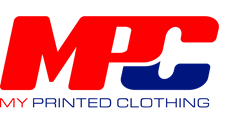Hi-vis clothing regulations
The current hi vis clothing rules were laid down by the International Standards Organisation in EN ISO 20471:2013. In their own words: “high visibility clothing is intended to provide conspicuity of the wearer in any light condition,” meaning come rain or shine, light or dark, the wearer has to be as visible as possible.
The three main components of hi vis clothing are fluorescent fabric; reflective strips that reflect light back at its source; and contrast materials. Only 3 colours are approved in the regulations: yellow, orange, or red. Pink hi-vis vests might be a common sight, but they are not compliant with EN ISO 20471.
The fluorescent and reflective sections help the wearer stand out in all weathers and light conditions. Meanwhile, the darker contrast materials make up those sections where dirt is most likely to accumulate: knees, ankles, sleeve ends, etc. This helps keep any dirt from reducing the visibility of the rest of the fluorescent fabric.
Hi vis clothing is split into three classes. Class 1 is the lowest, and is typically used in low traffic areas or in areas with good visibility. Class 2 provides an intermediate level of visibility, and is used for work done near heavy traffic or in low visibility areas. Class 3 is the highest level of visibility, and is for work done in high-risk or very low visibility areas.
To comply with these classes, a minimum surface area of clothing applies to each one. These minimums can be met in various ways. For example, hi-vis trousers worn on their own would come under Class 1. Wearing a hi-vis vest on its own would fall under Class 2 because a vest is generally more noticeable than trousers. A combination of hi vis clothing, such as jacket and trousers, would be compliant with Class 3.
As visibility classification can be altered by adding or removing items, employers should take into worksite temperature into account when assessing the need for hi vis clothing needs.
If you have any queries about hi-vis clothing rules and regulations, please don’t hesitate to contact us. Our customer care team is always happy to help.
Buy Hi-Vis Clothing
